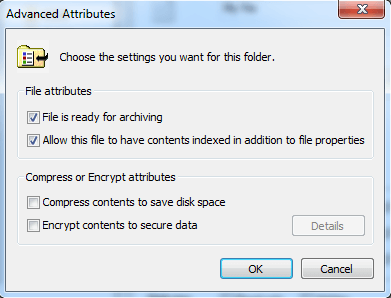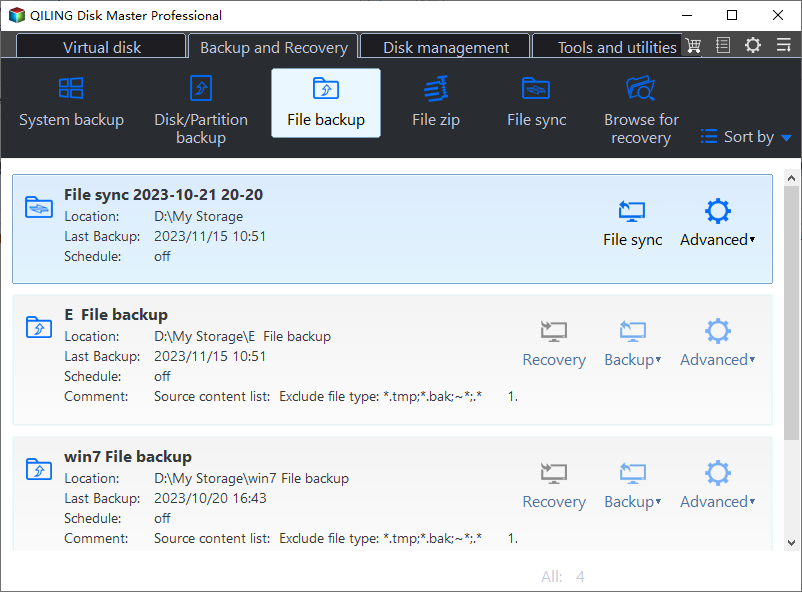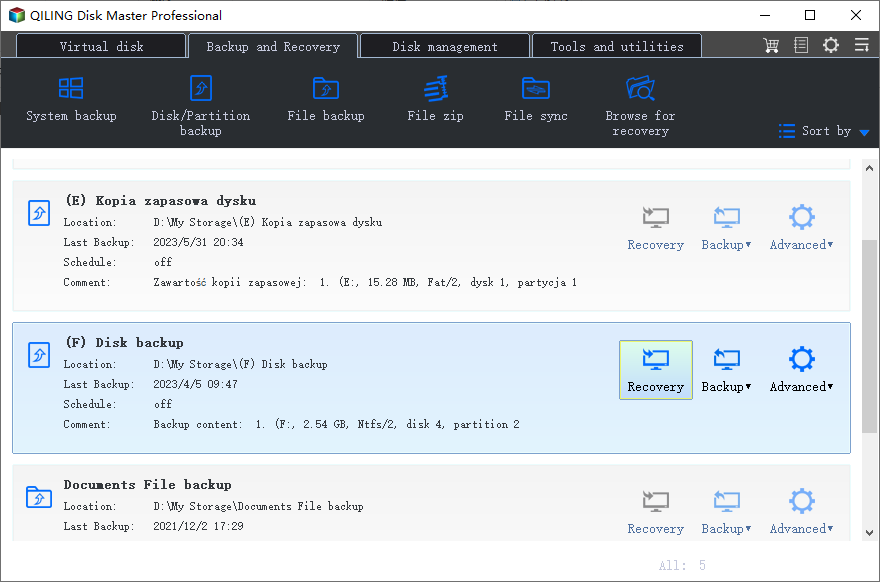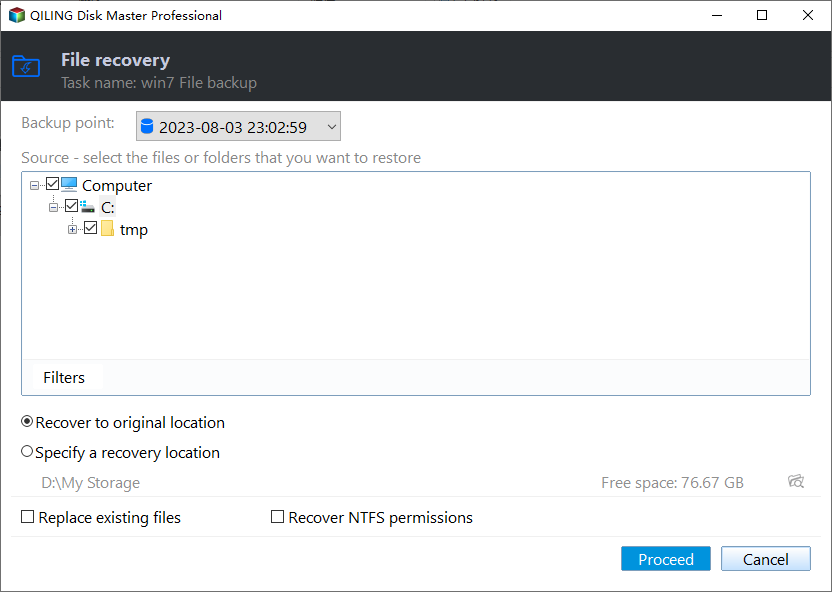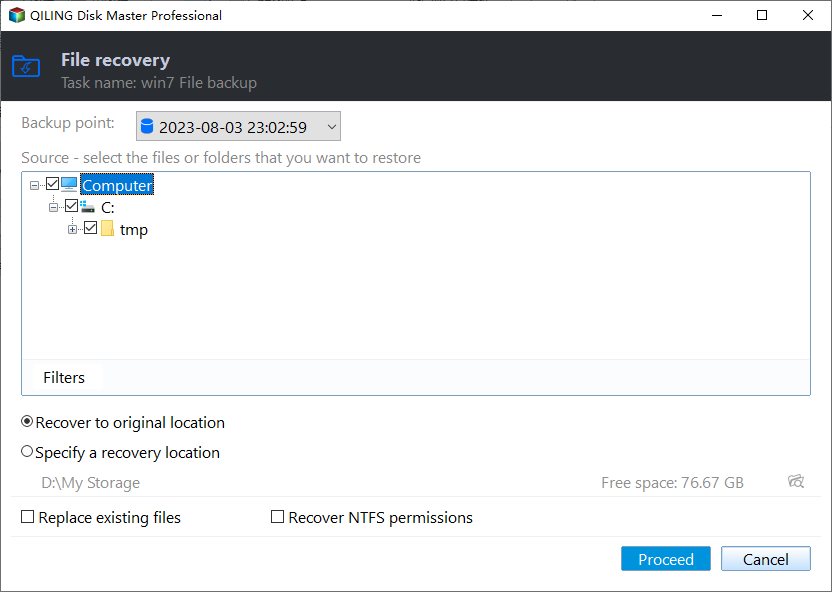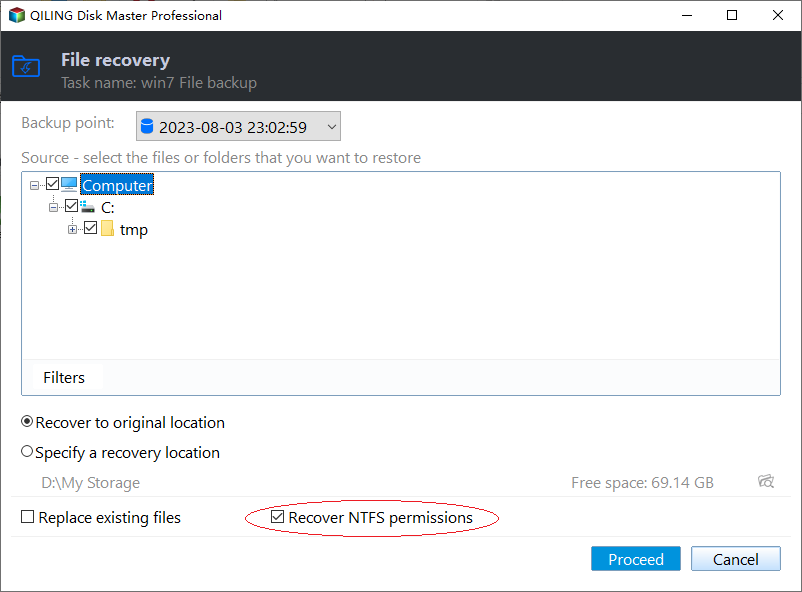Restore or Reset NTFS Permissions in Windows 10 Effectively (5 Ways)
- How do I reset NTFS permissions?
- What does NTFS permission in Windows do?
- Why restore NTFS permission?
- How to reset NTFS permissions in Windows 10
- Way 1: Reset NTFS security permissions with ICACLS command line
- Way 2: Backup and restore NTFS permissions with ICACLS command line
- Way 3: Backup and restore NTFS permission with Windows registry
- Way 4: Reset NTFS permission with the Windows registry
- Way 5: Restore NTFS permissions from backup with third-party software
- Summary
How do I reset NTFS permissions?
“Hello! We had an incident on the computer and some NTFS permissions from a folder structure even volume have been removed. What should I do to reset NTFS file permission in our Windows 7? Is the way difficult or easy because we don’t have much experience on computer?
Besides, I’m wondering if any of GUI tool could do a backup for all vital data, so that we could restore NTFS permissions as simple as restore a backup image when necessary. Maybe I can schedule a daily backup to keep it up to date. Any advice would be appreciated.”
In fact, many users have this doubt, if you are one of them, please continue to see below, learn more about NTFS permission and how to reset NTFS permission. You will learn the 5 effective ways in the following.
What does NTFS permission in Windows do?
In Windows networks, you can set sharing permissions for drives and folders. NTFS permissions, as its name implies, are available to drives formatted with NTFS, which affects local users as well as network users. To be specific, you can only access files or folders with permissions, regardless of where the user is connecting.
And the files in NTFS drives have a Security attribute compared to those in FAT32 formatted drives. You can access it with this approach: open a file in the NTFS partition > right-click it and select Properties > General > Advance. You could see two options there: File attributes and Compress or Encrypt attributes.
Why restore NTFS permission?
By default, almost all system files, system folders, and even registry keys are owned by a special user account called "RrustedInstaller", and other users only have read permission. And it will check the permissions when you access specific files or folders, if you don't have the permission, it will not allow you to access them. So you need to restore NTFS permission to gain it.
Also, there is a possibility that you lose permission to access specific files or folders, in this case, you can only restore NTFS permission to get it.
How to reset NTFS permissions in Windows 10
To Reset NTFS permissions, the most common way is using ICACLS command line. It's the replacement for cacls (Change Access Control Lists), and allows you to define who and how users access filesystem objects. Besides, you still have the ability to backup and restore NTFS permission and reset its to default permission or inherit from the parent folders if the NTFS permissions mess.
And you can also use the Windows registry and third-party backup software to help you out. Please read them carefully and select one.
Way 1: Reset NTFS security permissions with ICACLS command line
1. Open Command Prompt and run as administrator and navigate through the tree of folders you need to fix.
2. Type the following command and press Enter to take ownership of a tree of folders before resetting. If not, you will receive the "access is denied" error.
takeown /R /F *.
3. Click Yes if you are asked to replace the directory permissions with permissions granting you full control.
4. Type the following command and press Enter. It will reset the permissions of all the folders, files, and subfolders, and remove any other ACLs.
ICACLS * /T /Q /C /RESET
Tips:
- The /T switch is to get subfolder permissions too.
- The /C switch is to suppress success messages.
- The /C switch is to continue even if errors are encountered.
5. If you just want to reset NTFS permission for specific folders and grant the current user with full access permission, you need to type the following command.
ICACLS * /t /grant: F
Tips:
- The F switch is to grant full access permission.
- For more ICACLS switches, you need to learn in the Microsoft documents.
Way 2: Backup and restore NTFS permissions with ICACLS command line
And you can also backup and restore NTFS permissions with this command line.
1. Open Command Prompt and run as administrator.
2. To backup NTFS permissions, use the following command.
icacls d:data /save ntfsperms.txt /t /c
3. To restore NTFS permissions, use the following command.
icacls d: /restore ntfsperms.txt
Note: You may discover that the target path to save NTFS permissions is different from the path to restore. Don’t worry. It will be recognized as well.
Way 3: Backup and restore NTFS permission with Windows registry
1. To backup NTFS share permissions, go to Registry and navigate to the following key.
HKLMSYSTEMCurrentControlSetServicesLanmanServerShares
2. Right-click the Share registry key and select Export. You could set a unique name for it, ntfsperms.reg, for example.
3. To restore NTFS share permissions, double-click the ntfsperms.reg and import it back in the registry.
Way 4: Reset NTFS permission with the Windows registry
1. Open command prompt and run as administrator.
2. To backup the registry key - ntfsperms.reg, type the following command.
reg export HKLMSYSTEMCurrentControlSetServicesLanmanServerShares ntfsperms.reg
3. To restore the registry key - ntfsperms.reg, type the following command.
reg import ntfsperms.reg
Way 5: Restore NTFS permissions from backup with third-party software
Except for ICACLS and Windows Registry, you can also use third-party backup and restore software for help. I strongly recommend you using Qiling Disk Master Professional, as it will backup files and its NTFS together. If you lose permission or something goes wrong, you are able to restore NTFS permission on the computer you back it up.
Before start, you need to download this software and install it. Prepare an external storage or other devices to receive the backup image.
(PS: This version only works on Windows 11, 10, 8, 7, XP and Vista. For server users, you can choose to use its Server edition.)
1. Run Qiling Disk Master Professional on your Windows machine. Go to the Backup tab and select File Backup. Click Filess or Folders to select the data you want to backup. After that, select a destination path and click Proceed to backup files with NTFS permissions.
2. To restore NTFS permission, switch to the Restore tab and choose Select Task. Then, you will see all your backups and choose the file backup in the given list and click Next. If it is not listed, click Select Image File to browse manually.
Tip: To restore NTFS permissions on the external drive, please connect it to your machine beforehand.
3. Select files or folders with NTFS permission need to restore and click "Next".
4. Select where you want to restore your files or folders, either original location or new location.
5. Click the Setting icon at the lower left corner, tick "Restore NTFS Permissions" and hit "OK". At last, back to the main page and click "Proceed" to restore files with NTFS permissions.
Tip: NTFS permissions can only be restored to NTFS formatted drives on the computer you back it up.
Summary
If your files with NTFS permission mess, you can try above methods to reset NTFS permissions to default. To be sure your files are always safe, it's recommended to keep Qiling Disk Master Standard and backup files to external hard drive regularly. So no matter you lose the permission or it's damaged, you can easily get it back.
To protect unlimited PCs & servers within one company, the easiest way is to use the Technician Plus edition to backup files. It allows you to create a portable version of this software and backup files without installing again.
Related Articles
- Why Does My Computer Keep Blue Screen | 100% Solved
Do you have the issue of the computer keeping a blue screen? If yes, you are in the right place. This article gives a complete tutorial on what a blue screen means, why it appears, how to troubleshoot it, and some practical tips to prevent the computer blue screen of death. Keep reading and find your solution. - Why Is My Windows 10 Backup Taking So Long? (Here's the Answer)
Why is my Windows 10 backup taking so long? Do you want to know why? If yes, you are coming to the right page. This article will explain the reasons for the slow backup of Windows 10 and offer an alternative to Windows 10 backup. - A Quick Answer to: Will Updating My BIOS Delete Anything?
Updating BIOS is something you might have heard about. But have you ever been stuck on a question like, 'Will updating my BIOS delete anything?' This article will describe whether updating BIOS will delete anything on your PC and offer a tool called Qiling Disk Master to protect your data. - Windows 10 Backup Error Code (0x807800C5) – Why & How to Fix
Are you experiencing the Windows 10 backup error code (0x807800C5)? This guide will show you why the error occurs and how to fix it. Moreover, we'll provide an alternative to Backup and Restore, which can help you create a system image with ease.
